How to calculate the consumption of bricks?

Brick has long been one of the most common, if not the most frequently used material for the construction of various buildings, from residential to utility and industrial. It should be noted that the use of this material is associated with some difficulties for building designers.
One of them is the correct calculation of the consumption of bricks, since if the use of brick materials is incorrectly calculated, it may turn out that construction will start, and the amount of bricks will be insufficient, for which reason construction may stop.

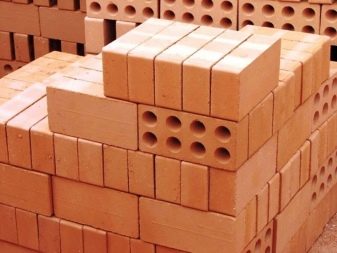
What does it depend on?
If we talk about what the number of bricks in brickwork depends on, then it should be said that there will be a lot of factors in general. Let's start with the fact that the calculation to begin with is carried out depending on the thickness of the brick wall. She usually happens:
- in half a brick;
- into a brick;
- one and a half bricks;
- in two bricks.
This is the first factor. Another factor is the volume and physical dimensions of the material as such. But to say about them, first it must be said that a brick has three sides. The first of them is called the bed and is the largest, the second is called the spoons and is the side. And the end of the brick is called a poke. If we talk about domestic standards, then usually such material has dimensions of 25x12x6.5 centimeters. Only the height of the poke will change. For a single solution, it is, as already mentioned, 6.5 centimeters, for one and a half - 8.8 centimeters, and for a double - 13.8 centimeters.
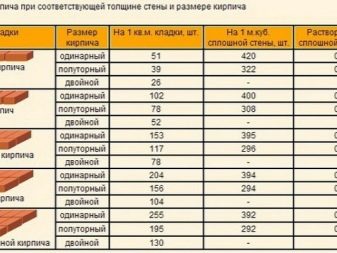
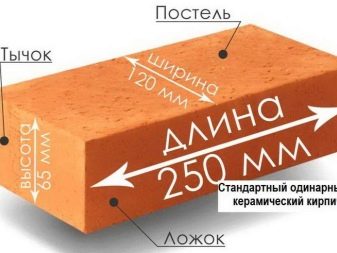
Calculation principles
Now let's talk about the principles of calculating material consumption. Today, there are two approaches to solving this issue:
- average consumption per cubic meter of masonry;
- the average consumption of this material per square meter of masonry.
The first technique will be applied when the wall thickness is uniform using anchoring. This is possible if only the same type of brick is used to create it. The second technique of use will be exclusively in cases where the wall is also uniform in thickness. Here, we can give an example that if a wall of one and a half or two and a half bricks is laid out not only from single, but also double bricks with jumpers, then the average amount of material in a cubic meter of masonry will not be used to calculate the required amount.
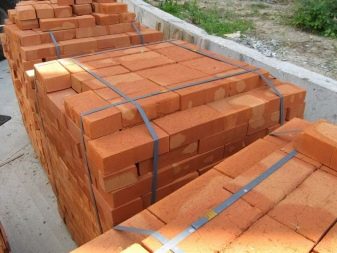
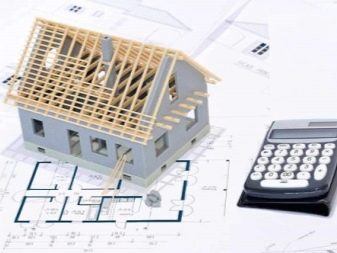
In addition, it should be included in the calculation principle that, in terms of their production component, these materials can belong both to the category of corpulent and hollow. In addition, depending on the material from which the brick is made, and its intended purpose, it can be:
- silicate;
- clinker;
- fireclay;
- facing;
- hyper-pressed;
- adobe.
Naturally, their thickness and volume will be different, which also needs to be taken into account. It is best if you have a homemade table at hand, where these parameters will be reflected. To carry out correct calculations, it is required to take into account the thickness of the seams. Typically, the rate will be somewhere around 10 millimeters (1 cm). This value simply needs to be added to the height of the unit of material itself. By the way, it is the neglect of the mortar seams that is the most common mistake when making calculations. The reason for this is quite simple - many believe that the mentioned seams are so insignificant in their thickness that they can be neglected.
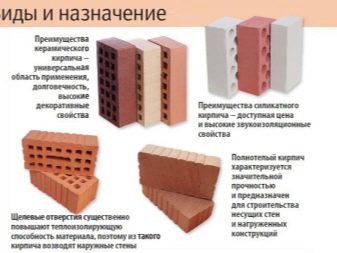

To calculate the number of bricks, you can apply a method based on calculating the area of \ u200b \ u200bthe walls. This indicator is found by multiplying by the amount of material needed to form a 1 by 1 meter wall. Here it should be taken into account that the thickness of the wall may vary. Then the calculation will be correct, where it will be necessary to find not the area, but the volume.
This can be done using the formula - V = a * b * c, where:
- a - height;
- b - masonry width;
- c - its thickness.
In the case of using this technique, it must be remembered that when making calculations, one should take into account the presence of openings for windows and doors. They should be taken away, because they will not be included in the formula.

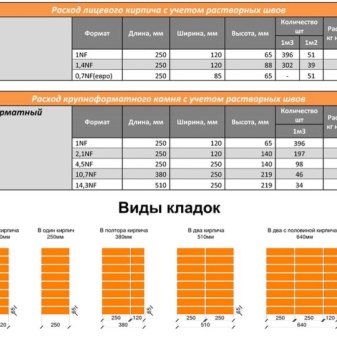
How to calculate?
Let's go directly to the calculations. The masonry thickness is determined not only in metric measurement, but also by the quarter elements of the building material in question. These calculations can be done using a calculator - how to calculate how much is needed for the base, knowing the parameters, but you can do the calculations yourself. They will depend on the masonry thickness and two methods can be used - find the total volume of the wall and divide it by the volume of the brick, having received a certain amount, or calculate the exact area and divide it by the block area, eventually obtaining the final result.
Now let's talk about the implementation of calculations for various types of masonry without using a masonry mesh. If we are talking about laying in stone, then it can be different in individual cases and have a different binding. But its width will definitely be twenty-five centimeters - the length of the bed of the material. Suppose that we need to raise the level of the basement by half a meter with a length of seven meters, and we will calculate by area. Let's see how many rows there are. Divide 500 by 65 to get a value of approximately 7.69. That is, you can raise the base either seven or eight rows.
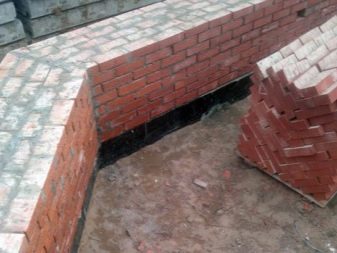
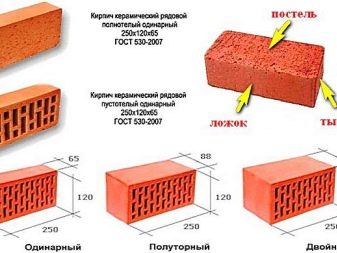
But you need to understand that the calculation is carried out from the material lying on the bed with a poke inward, and the other outward of the building. On this basis, the amount of material in one row in length should be calculated. If the wall is seven meters long, then 7000 needs to be divided by 120. We get a value of about 58. In this case, we still have butt joints, we need to multiply 7 by the obtained value, that is, by 58. We get 407 pieces.
Another method can be used to double-check this value - by volume. We have the following parameters of the site: 7x0.5x0.25 meters. If we multiply these values, we get 0.875 cubic meters. And one unit will have the following data - 0.25x0.12x0.065, which in total will give us 0.00195 cubic meters. Now we multiply the obtained values and get a figure of 448.7 bricks.
As you can see, there is still a difference, but it is not too significant. And the first method will be more accurate, because we based it on the number of copies in a row.
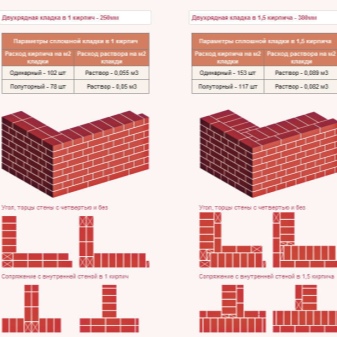

Consider the option of calculating half a stone. This method of laying on the wall is usually used when carrying out finishing work with the use of front material. In this case, it is interesting to know the amount required for a particular site or pillars. In this case, the size of the base will not change and we will leave the quantity next to it, since the height of the block will be the same as in the previous case - 6.5 centimeters.
Now let's find out how many units we need to create a series. To do this, you need to multiply 7 by 0.25, we get 28 pieces. Now we multiply this value by 7 and get the number 196. As you can see, less material is needed, which means you can save money, but here we should not forget that the masonry in a half-stone can represent a whole wall, and not just a facing solution.

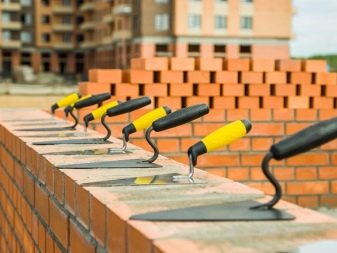
Another masonry option, which should be mentioned, has a name of a quarter of a stone. In this case, the laying of the brick is carried out on a spoon, which will be facing inward, and outward it will look with the bed side. This method is usually used also as a facing, but there will be fewer rows.There will be about 4 of them with the expectation that there will be more seams. We will also need 28 bricks in length, and the total amount will then be 112 pieces.
That is, as you can see from the example of the three main methods for calculating the material for the basement and the wall, there is nothing difficult in carrying out the calculations. In this case, a situation may occur when you have to lay thicker masonry with your own hands. But whatever it is, nothing will change much. It must be divided by the width of the unit (25 centimeters) and, having counted each of them separately, it is necessary to add up and get the total.
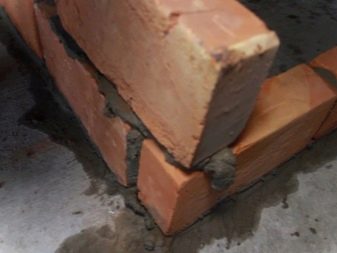

Advice
If we talk about advice, then the first thing I want to say is that if something does not work out in the calculations, then it is better to turn to professional builders who can quickly help and make the correct calculation of the required amount of material. Another tip that should be said is that it is best to use one type of brick when building. After all, different types have different parameters, which is why the calculations for them will be different. And even a professional can sometimes get confused in these subtleties.
Another point - using an online calculator can significantly speed up the process of calculating brick consumption for almost any building, regardless of its purpose.



For information on how to calculate the consumption of bricks, see the next video.













The comment was sent successfully.